What household adverts looked like through the decades
Beautiful vintage adverts for home products around the world

Though childhood memories can often be hazy, it’s surprising how an old school advert can take you back.
From catchy slogans you still remember to novelty products you'll never forget, these ad campaigns chart the evolution of society, technology and trends – as well as the history of advertising.
Click or scroll on to take a nostalgic look back at ads from the past century...
1922: Dominion Linoleum

Invented in 1860, linoleum quickly became one of the world's most popular floor coverings – and it remained that way for about a century.
While it was made from fairly mundane ingredients like cork dust, linseed oil, gum and pigments, lino was more often than not adorned with extraordinary colours and patterns – the more garish the better!
This 1922 ad for Canada's Dominion Linoleum boasts that it's "always clean, bright, healthful" and appealing to women who value their family's wellbeing.
1926: Electrolux vacuums
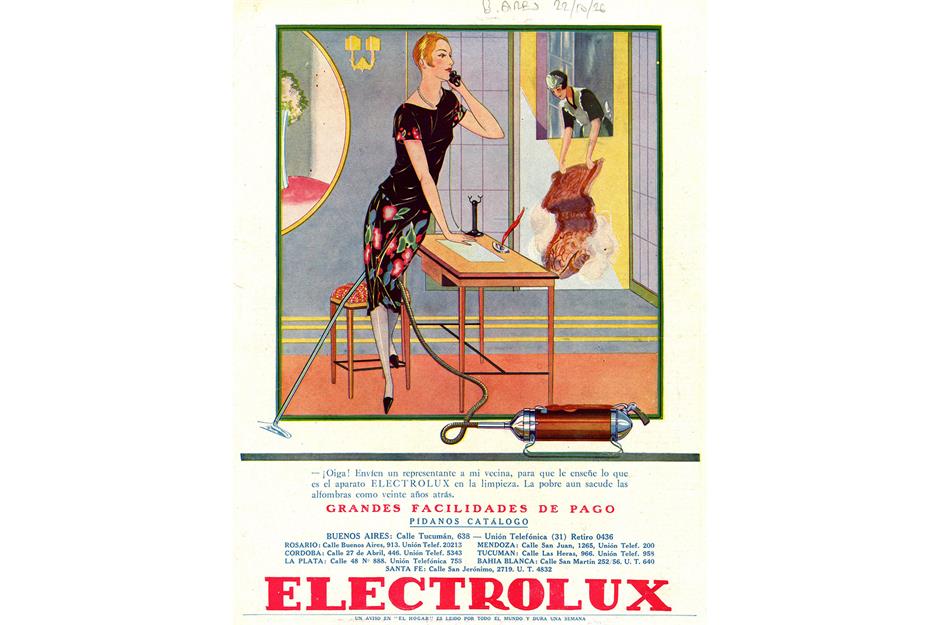
Rudimentary vacuum cleaners had been around since 1860, but it wasn't until 1915 that small motor-powered models became widely available for use in wealthy private homes.
This art deco-style ad from Argentina shows a woman with her own sleek Electrolux, calling for a representative to visit her neighbour, whose maid is still cleaning her carpets "like she did 20 years ago".
1920s: pianos
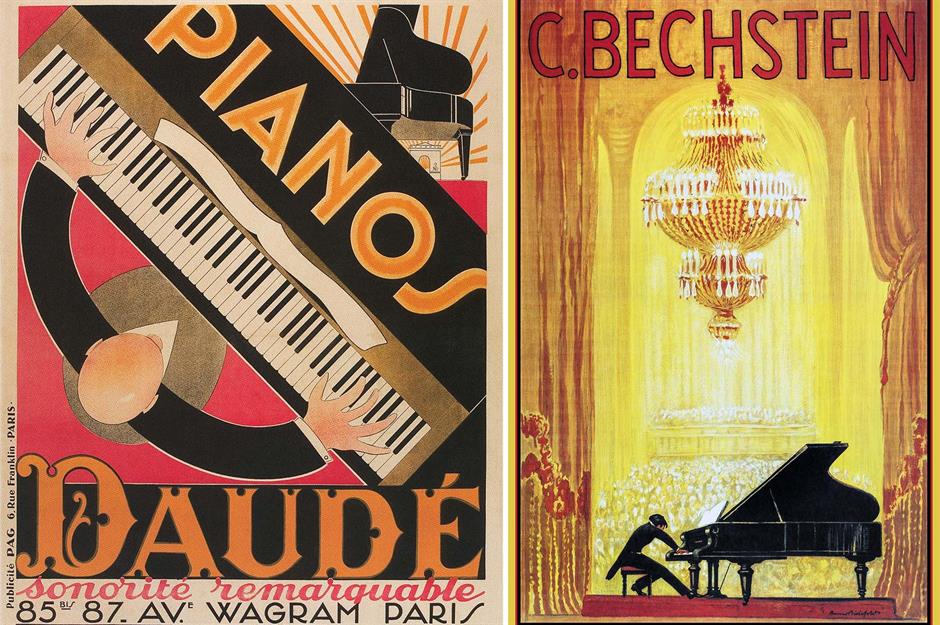
In an age when many people still relied on musical instruments for entertainment, having a piano at home was much more common than it is today.
The colourful ad on the left promoted the "remarkable sound" of the Daude Pianos being sold at a shop in Paris. Meanwhile, in neighbouring Germany, the striking poster on the right celebrated Bechstein instruments, which were made in a factory in Berlin.
1931: Neolux light fittings
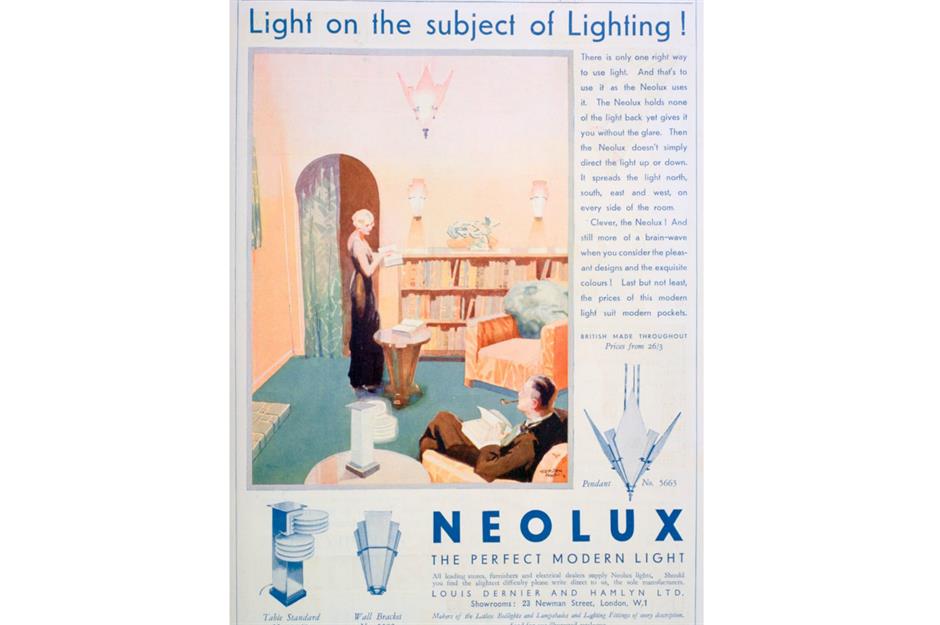
Founded in Switzerland in 1923, Neolux is still going strong more than a century later.
This elegant ad urges consumers to write to the manufacturers should they encounter ‘the slightest difficulty’ in finding a supplier. What outstanding customer service!
1932: solid wood desks
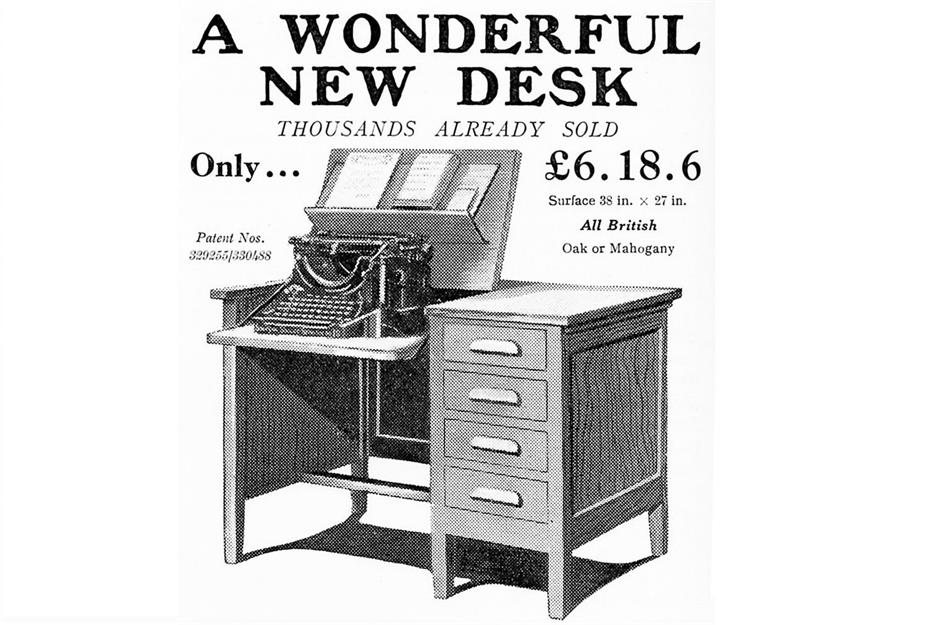
This wooden desk would have been an unaffordable luxury for the majority of people costing almost two-and-a-half week's wages.
Despite the Great Depression, things weren’t all bad – those looking to purchase property could expect to pay around three times their annual salary rather than the 10 times it is today.
1937: Carrier air-conditioning units
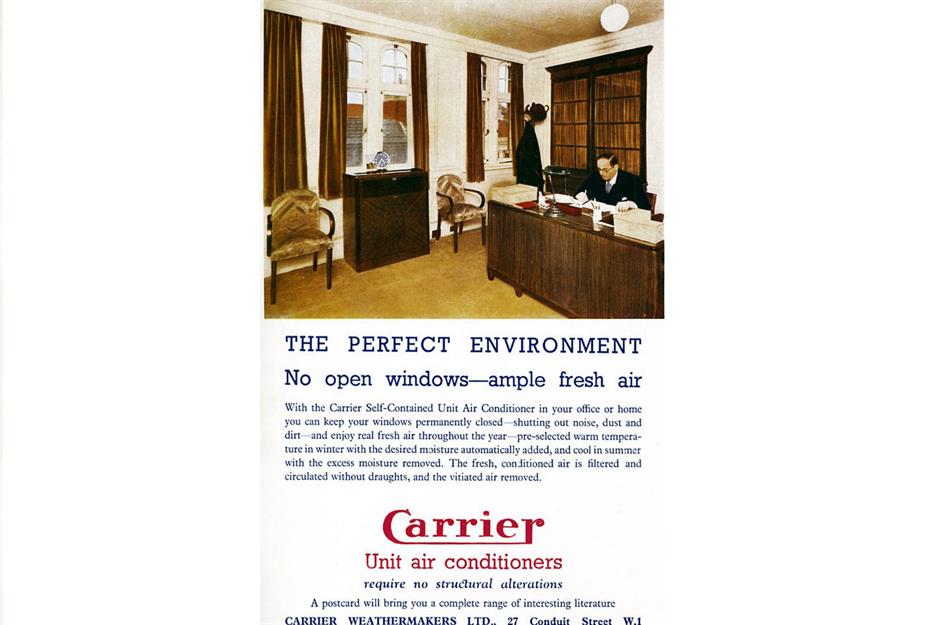
Air-conditioning wasn’t a new invention in the 1930s, but neither was it democratised – that wouldn’t happen for another 20 years.
Employers soon realised its benefits in improving worker productivity and offices were increasingly fitted with A/C units like this one from the 1930s.
1930s: Frigidaire refrigerators
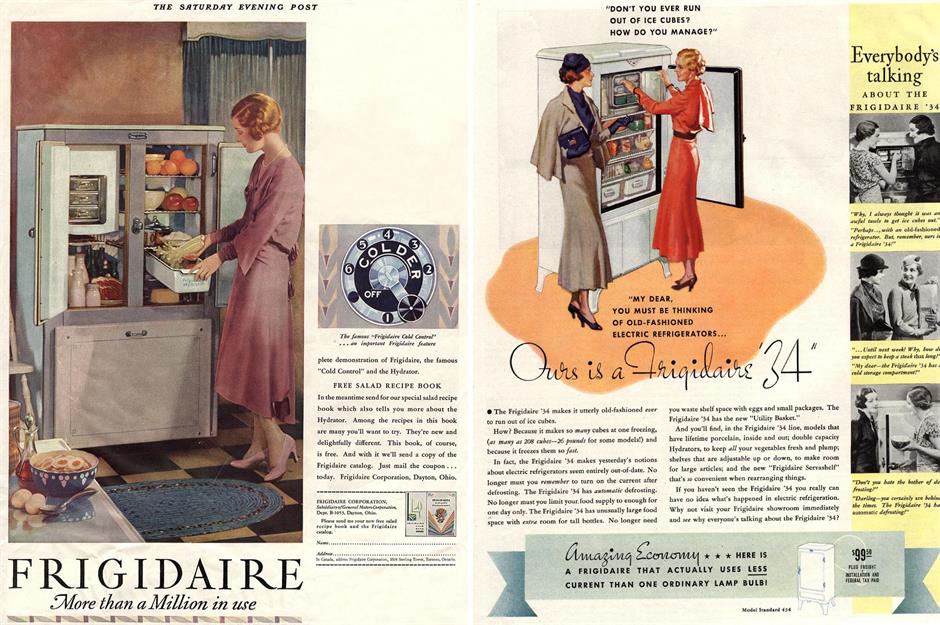
A crisper drawer doesn’t seem like anything to write home about, but it was a brand-new invention almost a century ago. The discovery that increasing humidity helped keep produce fresher for longer transformed food storage in the 1930s.
Complete with a hydrator and a free salad recipe book, these fridges would have been highly desirable.
1942: Bowmans furniture
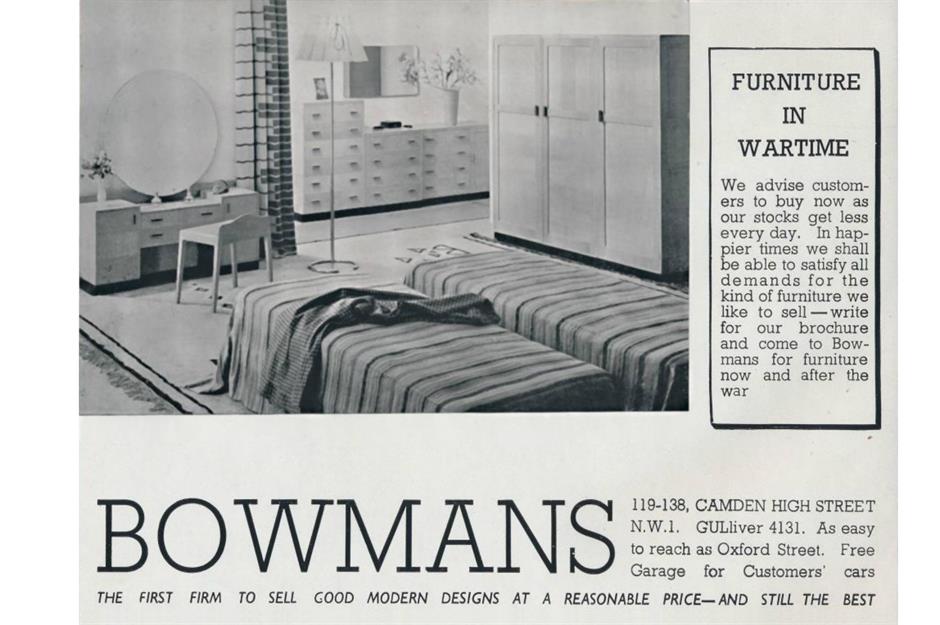
A bleak reminder of the realities of wartime Britain, this Bowmans furniture advert urges customers to buy now while stocks last.
A shortage of raw materials in the UK during the Second World War led to the founding of the Utility Furniture Scheme and furniture rationing until 1952.
1945: Belmont televisions
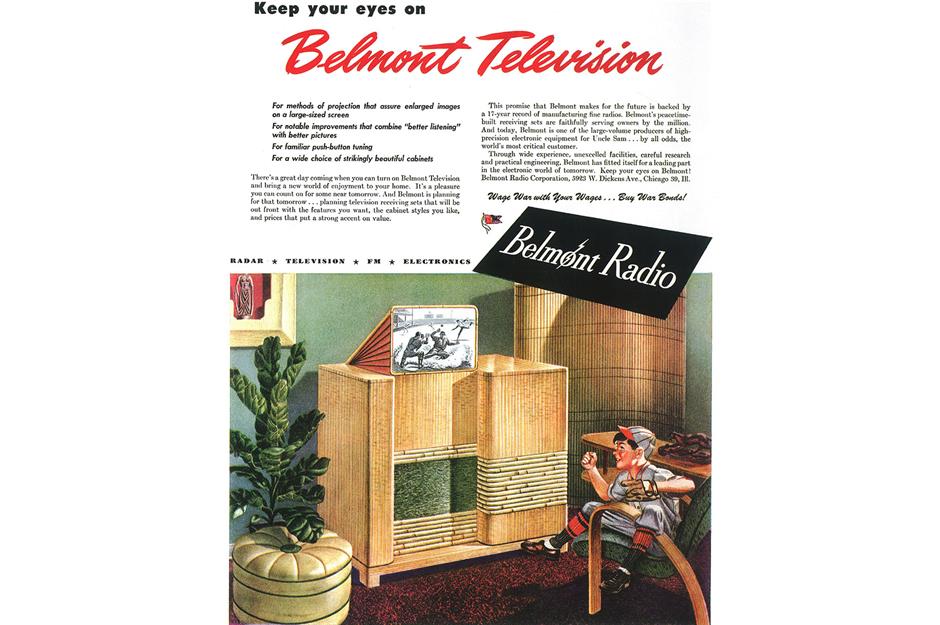
These days, we’re accustomed to wafer-thin TVs with vibrant screens, but this wasn’t always the case. Back in the 1940s, Belmont television sets were revolutionary, manufacturing TVs with "pictures the whole family can see".
Did your grandparents have a set like this?
1940s: Scotch tape
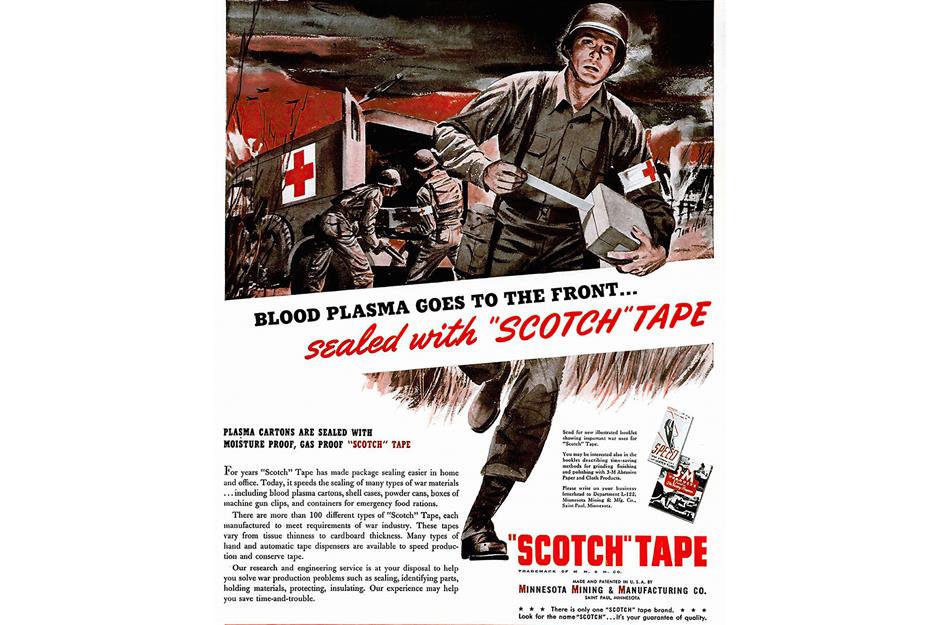
During the Second World War, families were advised to ‘make do and mend’ and they endured a decade of wartime thriftiness.
On the home front, Scotch tape adverts explained the various ways it could save money around the home. Meanwhile, it was being used on the front lines as a "moisture-proof, gas-proof" sealant on boxes of plasma.
1940s: Westinghouse washing machines
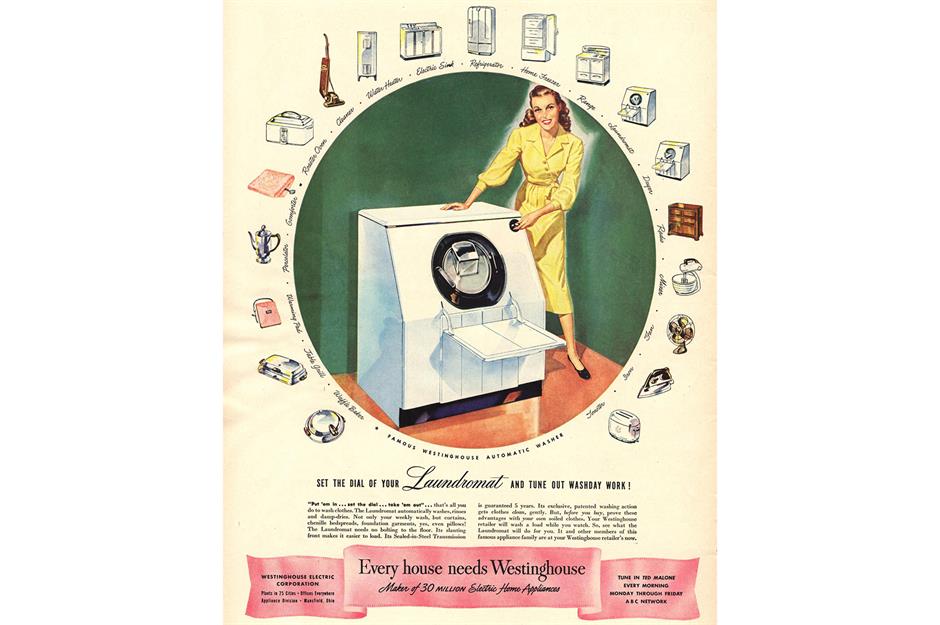
The economic impact of the Second World War meant washing machines like this one would have been a luxury far out of the reach of most families, and possibly a home feature that your grandparents would have craved.
When production was suspended in the US during the war years, appliance manufacturers took the opportunity to develop automatic models that would revolutionise household chores in years to come.
1950: kit homes
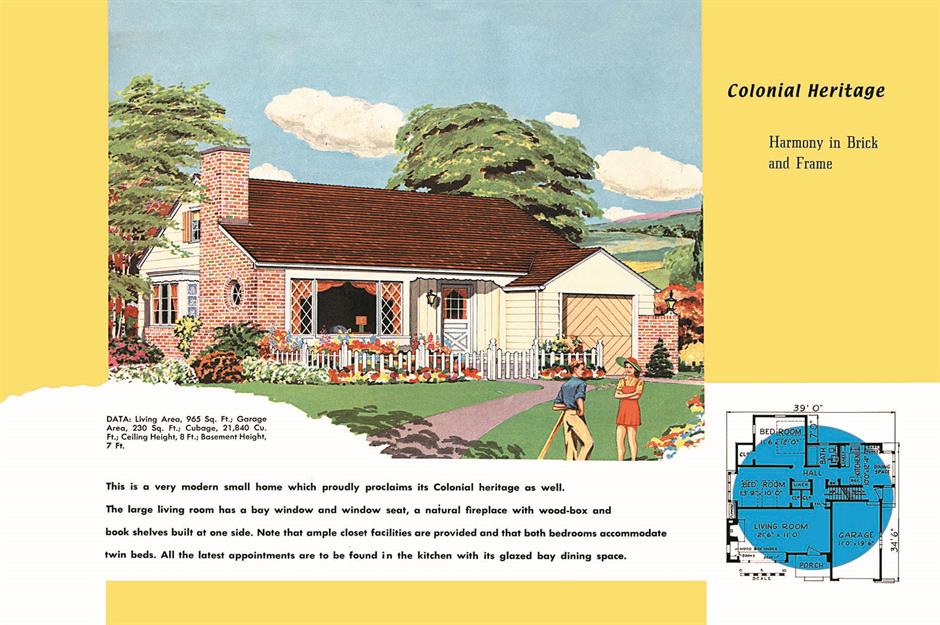
With a burgeoning middle class demanding new and better housing in the US, kit homes became an easy answer.
Homes like this charming two-bed could be picked from a catalogue and the building materials delivered by rail or road to be erected in a matter of weeks.
1955: blast-resistant houses
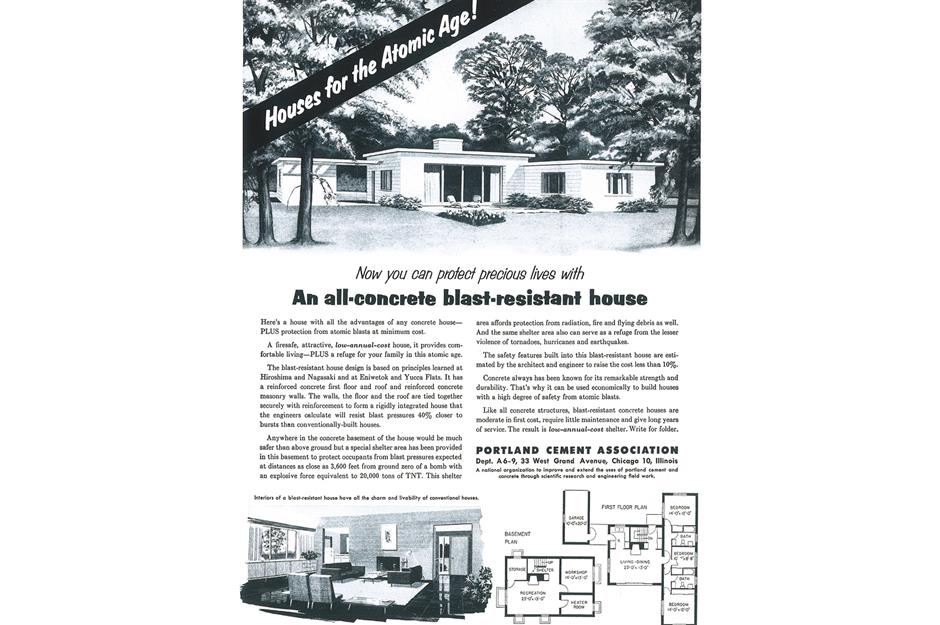
Following the catastrophic bombings of Nagasaki and Hiroshima, a The New York Times journalist branded the 1950s the beginning of the 'Atomic Age’.
To counter the potential risks posed by nuclear warheads, construction companies began marketing ‘blast-resistant houses’ such as this one.
1957: Admiral televisions

This Christmas advertisement for Admiral TVs, radios and record players shows just how diverse the designs were back in the 1950s – far from the indistinguishable flat screens we have today.
We particularly like the portable television. While it was unlikely many people caught up with the news on the go, these handheld sets gave families the chance to watch TV anywhere in the home.
1957: Grècéram floor tiles

In the 1950s, France – and much of Europe – began to emerge from a post-Second World War economic slump.
As the economy grew, people had more money in their pockets and could turn their minds to home improvement, such as laying new flooring like these practical Grècéram tiles.
1950s: WalPaMur paint
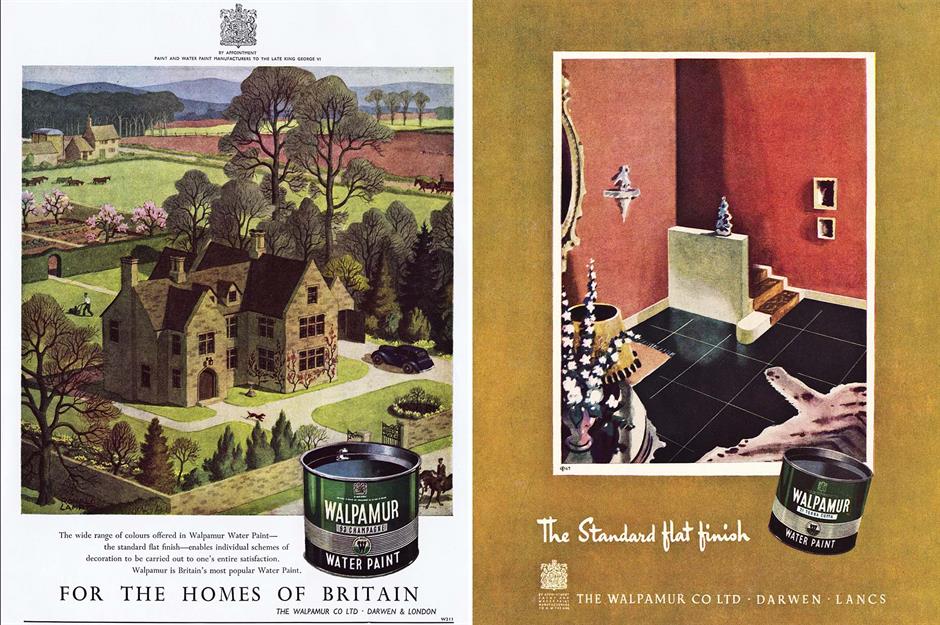
Tasked with developing several camouflage shades and supplying the Allied Forces with thousands of gallons of white paint, WalPaMur (a shortening of The Wall Paper Manufacturers' Company) played a key role in the Second World War.
When regular production resumed in the 1950s, the company continued to grow and innovate, and today it's known as Crown Paints.
It used beautiful artwork designed by Ronald Lampitt (left) to promote the brand, pitching itself as the go-to paint company for the high-end decorator.
1962: Australuco aluminium
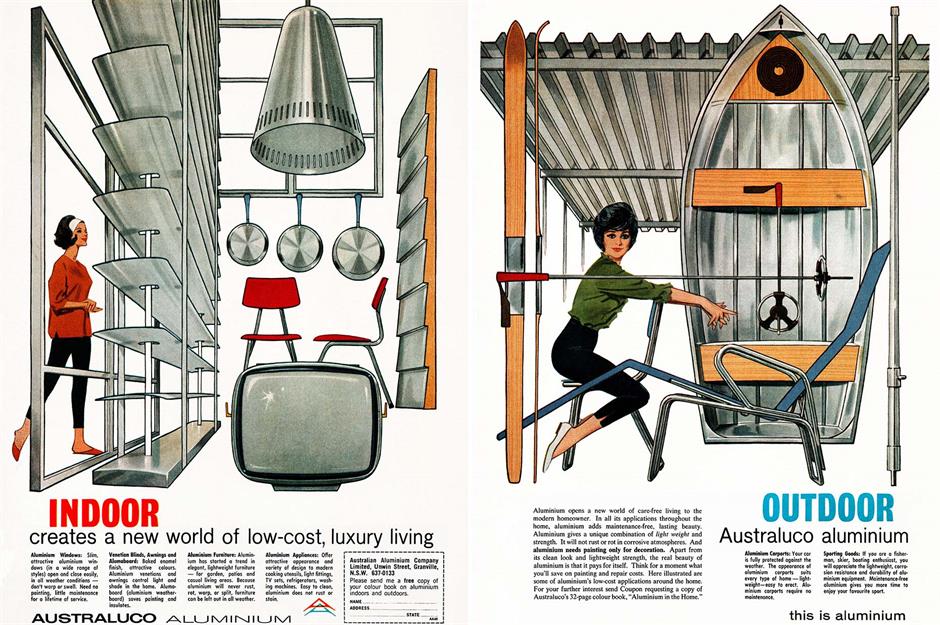
These 1962 ads for Australuco (The Australian Aluminium Company) highlighted uses for the metal inside and outside the home.
Suggested uses included pans, shelving, windows, blinds, light fittings and even aluminium TV casings to create "a new world of low-cost, luxury living".
Strong and low-maintenance, the metal could also be used to build carports, boats, patio furniture and sporting equipment.
1963: Bell extension phones
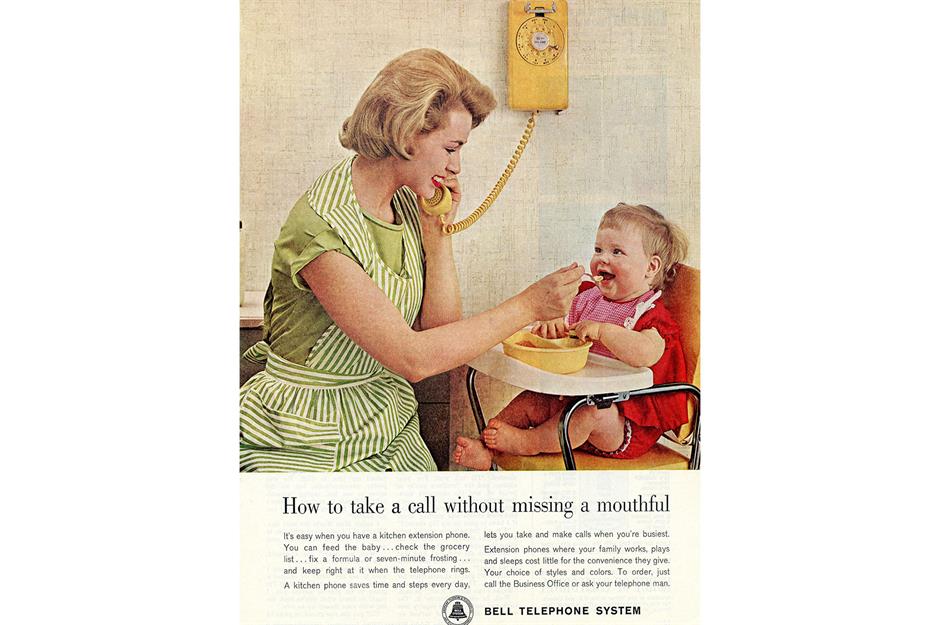
Extension cables finally gave people the freedom to walk and talk at the same time. Available in a range of pastel colours, these Bell telephones were very popular in the 1960s.
This ad states that a Bell extension phone owner could "feed the baby...check the grocery list...fix a formula or seven-minute frosting" all while taking a call. What fun!
1966: the Dalí shirt

Pedro Regojo's family textile company Confecciones Regojo hit the big time in the 1960s, when he struck a deal with world-renowned Spanish artist Salvador Dalí to promote his clothing.
Dalí lent his signature and distinctive image to what became known as 'the Dalí Shirt', which evolved into numerous styles from its launch in 1963 right through to the mid-1970s – including the non-iron number pictured here.
1967: Edison Electric Institute

This colourful ad appeared in Life magazine in March 1967 and pushed electric-powered heating and cooling over gas options.
Trumpeting "a clean break with the past", the Edison Electric Institute tapped into the forward-thinking attitude of the time, while also promising homeowners would be as "warm as a cuddling kitten" with electric heating.
1960s: Georgia-Pacific panelling

This ad for oak panelling was created with women in mind, which highlights its "family-proof finish" and Good Housekeeping Seal.
Stained avocado green – one of the hottest colours of the 1960s and 1970s – its "subtle colour" makes it "the panelling designed for the decorator in you", according to the enthusiastic copywriter.
1973: Armstrong floors
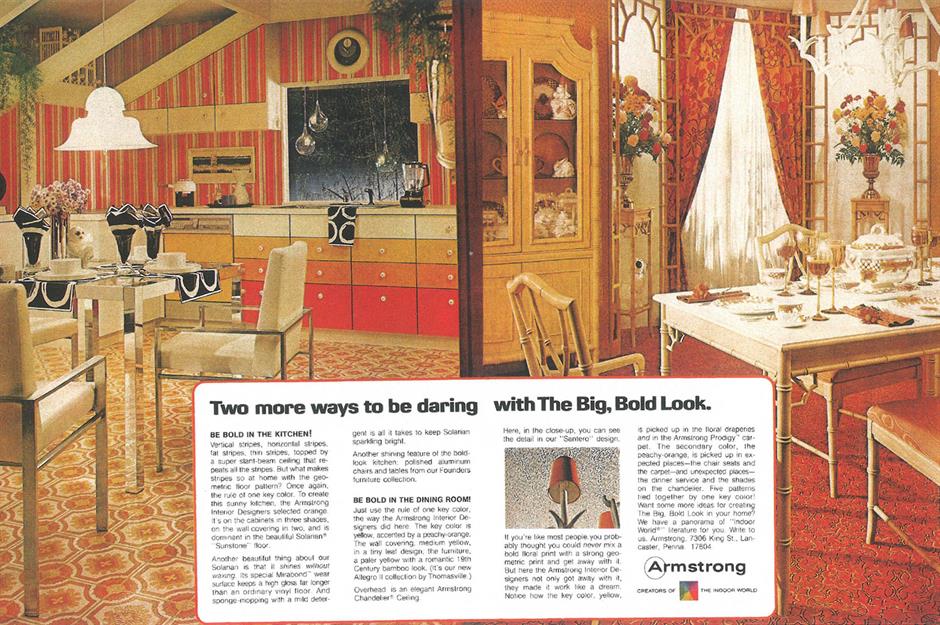
Bright and hardwearing, vinyl flooring was still popular during the 1970s, as we can see from this ad for Armstrong's high gloss Solarian Sunstone floor (left).
Packed with stripes, floral patterns, cane furniture and – of course – lots and lots of orange, these rooms certainly achieve the "big, bold look" that gave 1970s interiors their wow factor.
1974: Pioneer speakers
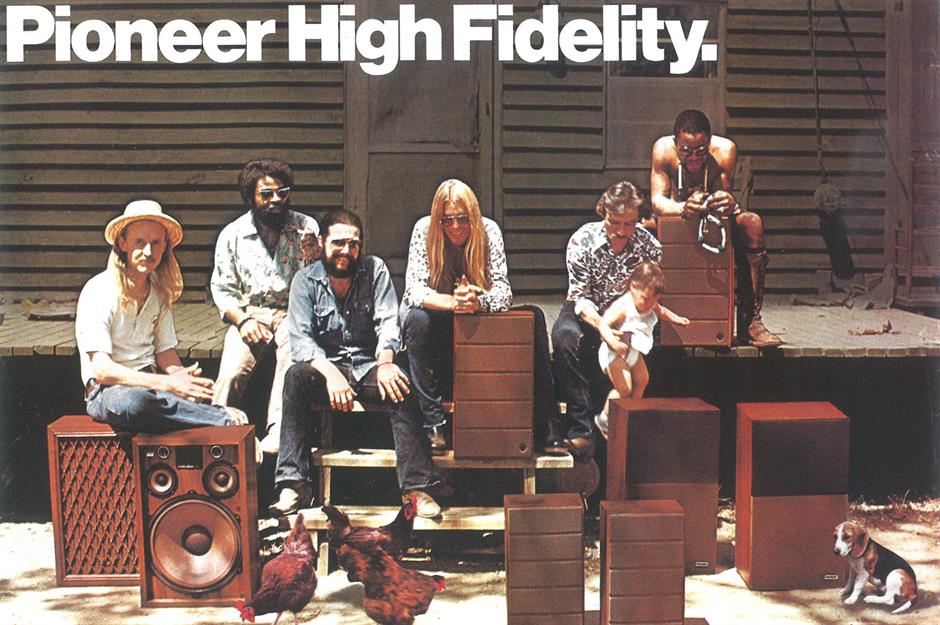
Considered by many to be the Golden Age of speakers, the 1970s was all about sound quality.
The emergence of transistors in the previous decade enabled the production of more powerful speakers with crisp, undistorted sound. Were you lucky enough to have a pair of Pioneer speakers at home?
1970s: Chippy telephone tables
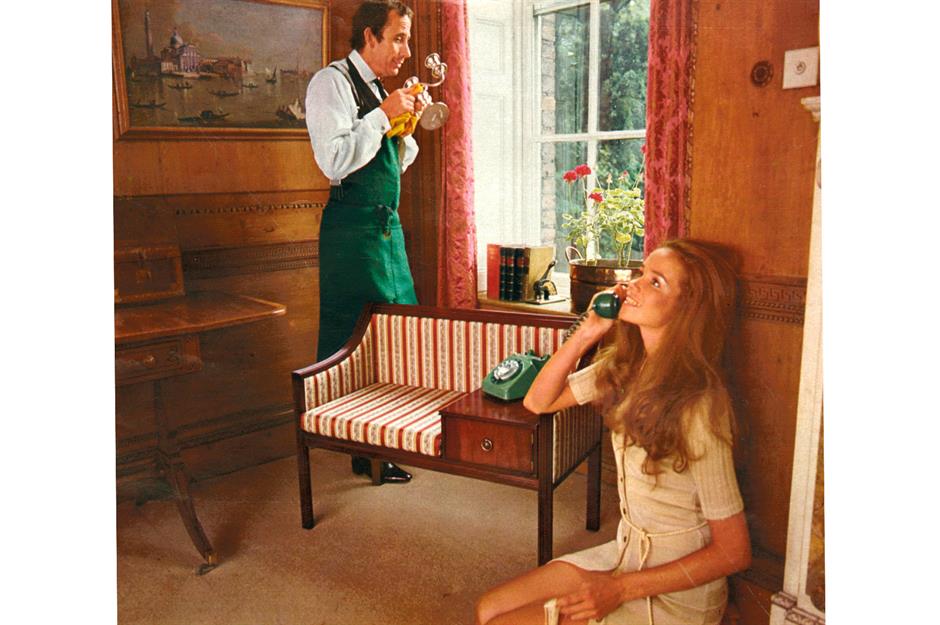
Having a piece of furniture specifically designed to store your telephone and phone book, and to sit on while chatting, might seem bizarre to younger generations. However, they were commonplace in homes well into the 1970s and only fell out of style after cordless phones became the norm.
Chippy designed a range in the 1970s to "grace any setting from country cottage to stately home".
1986: Sony remote controls
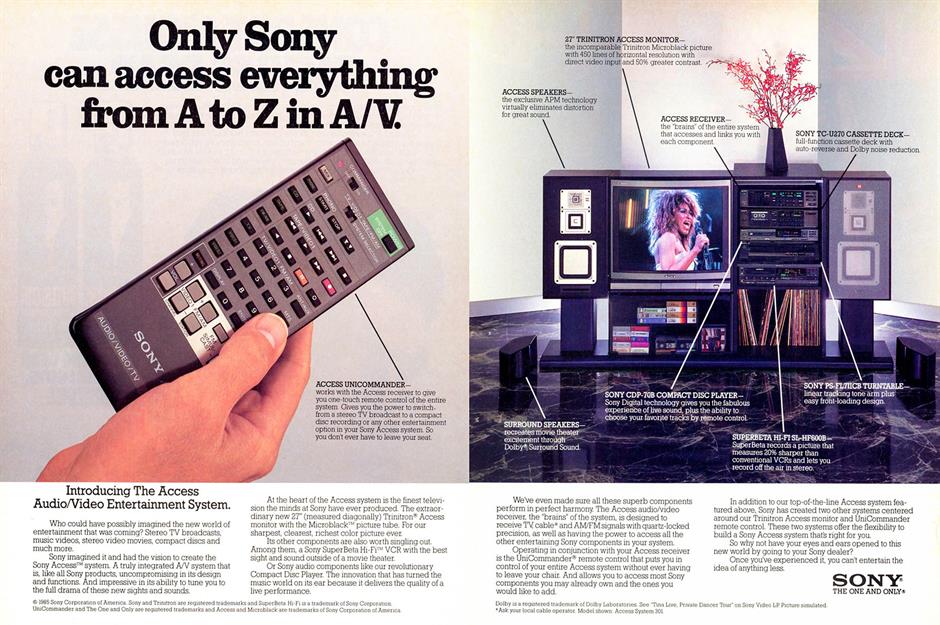
Founded in Tokyo in 1946, Sony dominated the electronics sector throughout the 1960s, 1970s and 1980s.
Published in 1986, this advert publicises the Sony Access System, a home theatre complex that combined a 27-inch television with a turntable, CD player and speakers.
What more could you possibly want in your living room?
1980s: Sun dishwasher soap
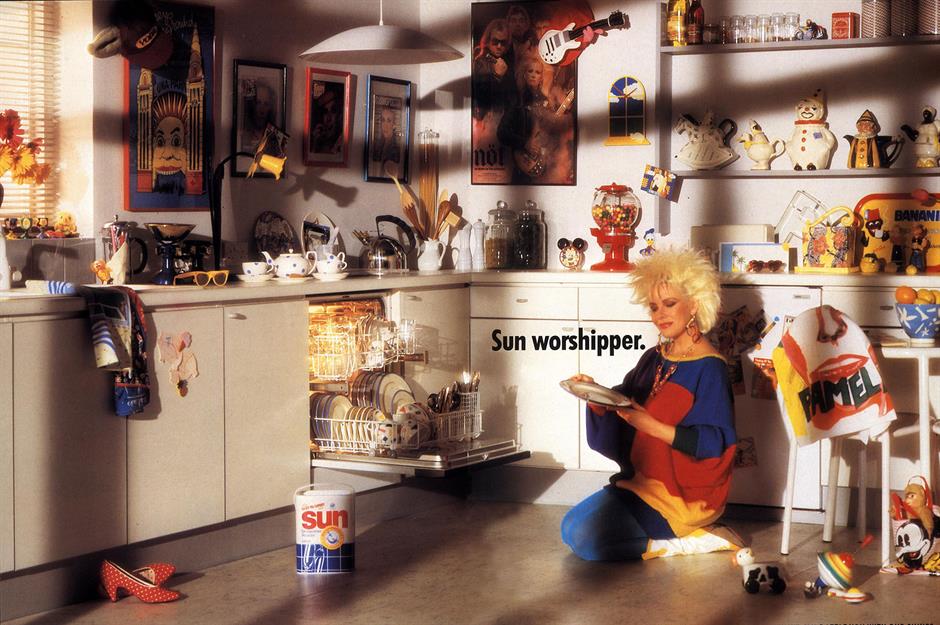
From the kitchen filled with knick-knacks in garish primary colours to the big hair and bold accessories, this ad screams 1980s style.
While fewer than 20% of households owned a dishwasher in the 1980s, they were becoming more popular thanks to evolving gender roles, increased efficiency and decreasing prices.
1980s: Playmobil home
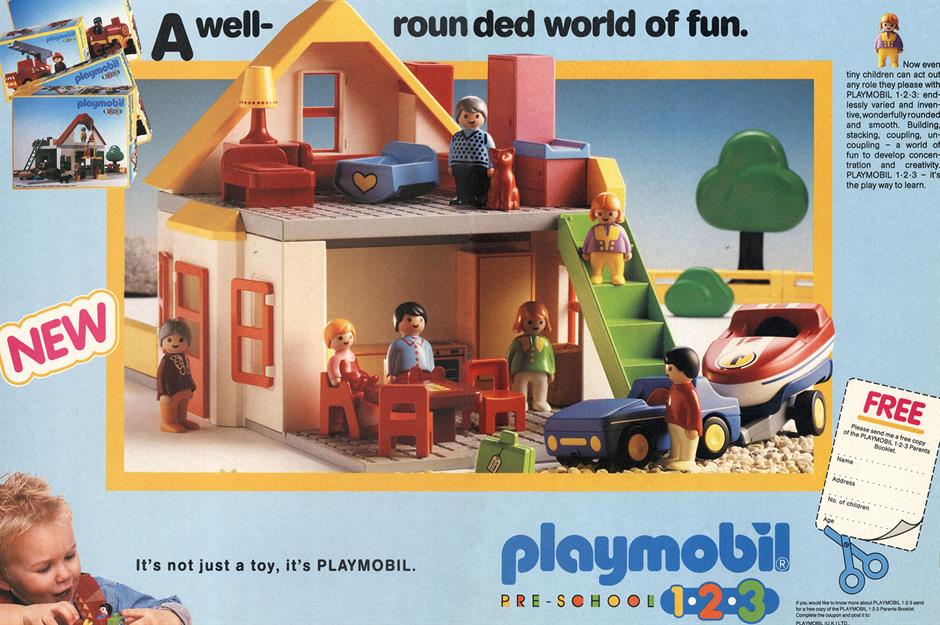
Playmobil was invented in Germany in 1974. Since then, more than 3.5 billion figures have been made, covering 40 themes and sold in over 100 countries worldwide.
Inhabited by the iconic 7.5cm (3in) figures, this little house boasts a hint of 1980s affluence in the form of a speedboat parked outside.
1991: Sony Walkman
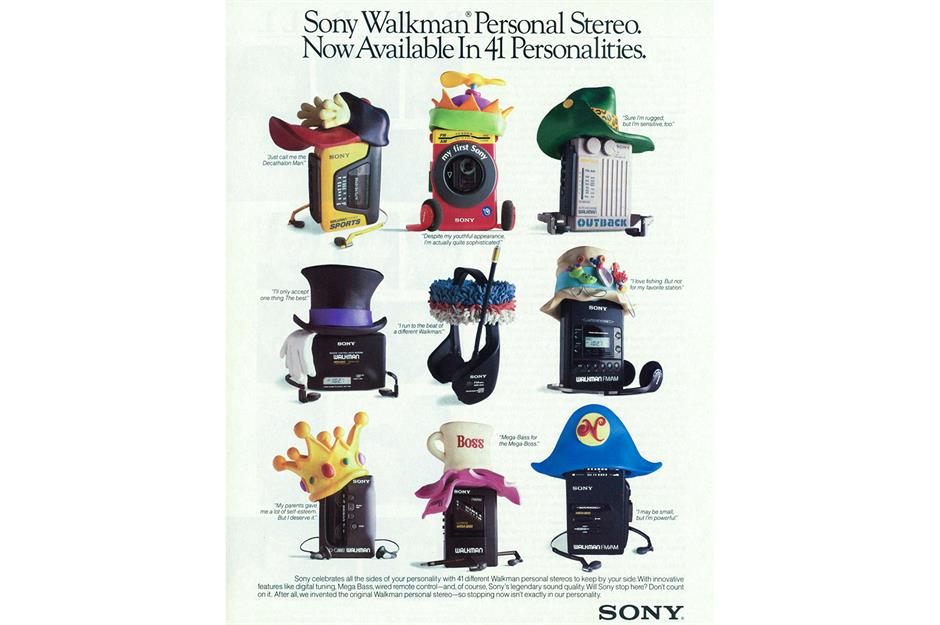
When the Sony Walkman hit the shops in July 1979, it was the first time in history that people could listen to personal music on the go. Mind you, this privilege came at a cost – the first Walkmans were $150, which is around $663 (£491) in today's money.
Since then, the music player has been developed and adapted to play CDs, Mini-Discs, MP3s and, today, to stream music via the Walkman app.
1999: Apple iMac computers
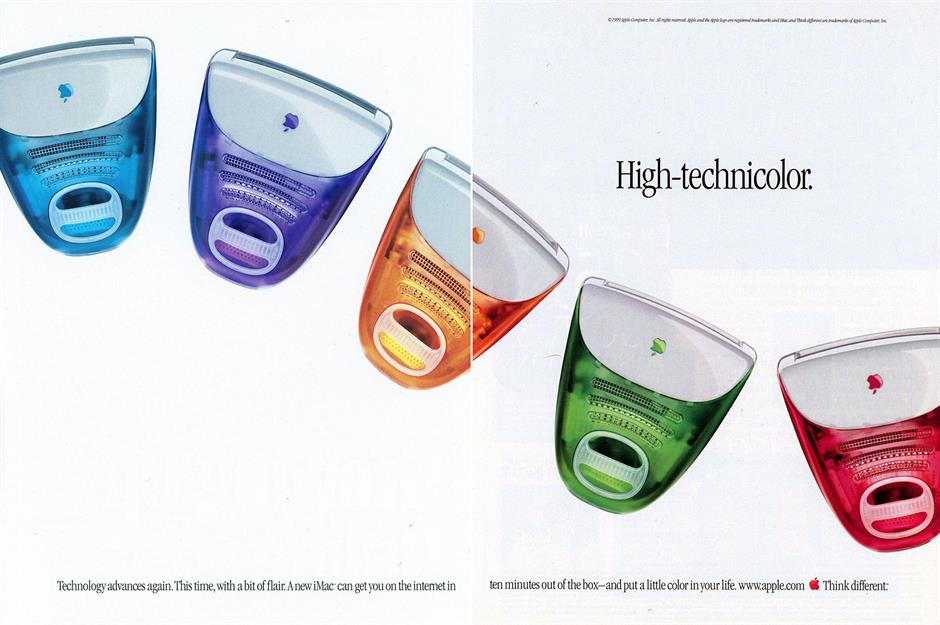
In a world where boxy beige monitors were the norm, Apple did something amazing – it made computers cool. Introduced to the market in 1998, the iMac sported a semi-transparent design available in a range of vibrant colours.
Smart and aesthetically pleasing, it quickly became the home computer of choice for any hip household.
1990s: IKEA blinds
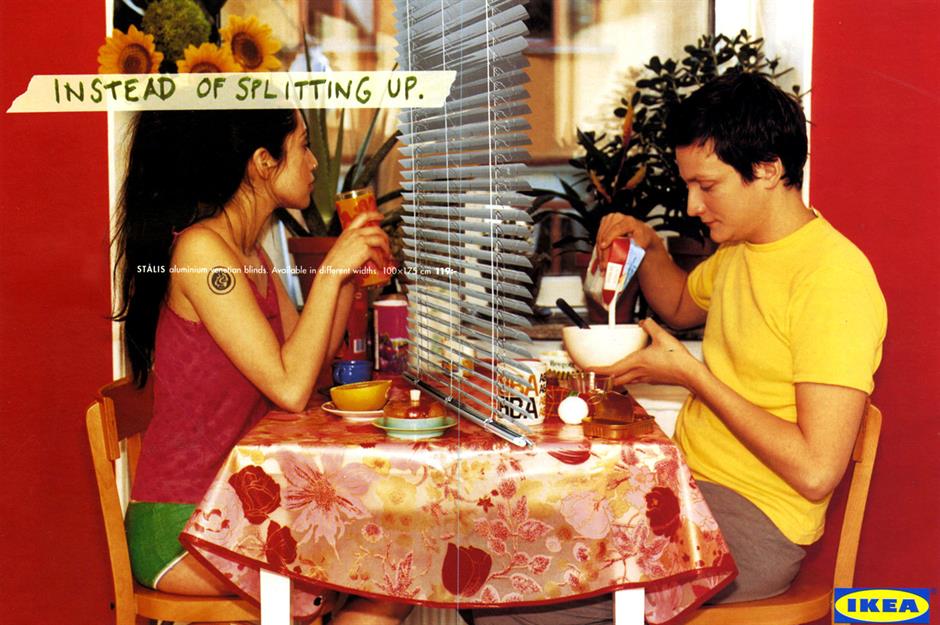
IKEA was founded in Sweden in 1943, spread to Norway and Denmark in the 1960s and it wasn't until the 1980s that stores opened in the UK and USA, where it quickly dominated the ready-to-assemble furniture market.
Combining compelling visuals with witty copy, its adverts in the 1990s were more provocative than before or since.
Love this? Now discover more retro homes and vintage interiors
Comments
Be the first to comment
Do you want to comment on this article? You need to be signed in for this feature